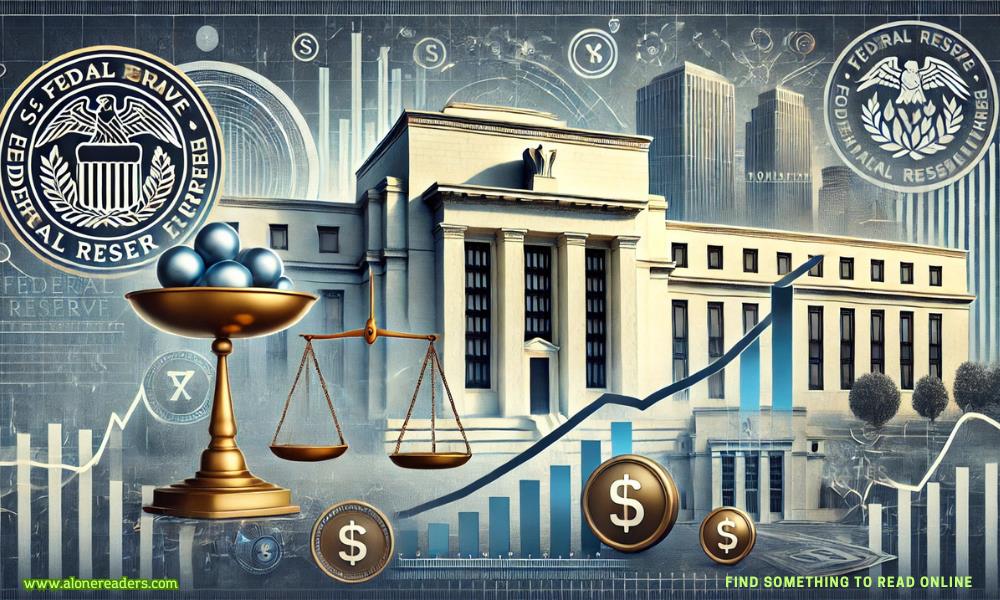
The U.S. Federal Reserve has chosen to hold interest rates steady in its latest policy decision, signaling a cautious approach in balancing economic growth with rising inflationary pressures. This move comes after a series of rate hikes over the past year aimed at curbing inflation, which had soared to levels unseen in decades. Despite concerns about persistent price increases, the Fed believes that holding rates for now is the best course of action to monitor economic stability.
The decision to maintain interest rates reflects the Fed's ongoing struggle to strike a balance between controlling inflation and ensuring that economic growth does not stall. Federal Reserve Chair Jerome Powell reiterated that while inflation remains a concern, the economy is showing signs of resilience. The Fed is closely watching economic indicators like employment, consumer spending, and overall price trends before making further adjustments.
“We are not out of the woods yet,” Powell said during a press conference following the decision. “Our primary focus remains on achieving our dual mandate: promoting maximum employment and ensuring price stability. We believe the current rate is appropriate, but we will adjust if the data suggests otherwise.”
The Fed’s decision is in line with expectations from many analysts who predicted that the central bank would pause its rate-hiking cycle to assess the cumulative impact of previous increases. Over the past year, the Federal Reserve has raised interest rates multiple times to tackle inflation, bringing the benchmark rate to its highest level since the 2008 financial crisis.
The decision to keep rates unchanged can be attributed to several factors. First and foremost, inflation, although still high, has shown signs of moderating in recent months. The Consumer Price Index (CPI), one of the main indicators the Fed uses to measure inflation, has been gradually declining from its peak. While the inflation rate remains above the Fed’s target of 2%, the pace of price increases has slowed enough to justify a temporary halt in rate hikes.
Another factor influencing the Fed’s decision is the state of the labor market. Unemployment remains at historic lows, and job creation has been robust. This strong labor market supports consumer spending, which is a significant driver of economic growth. However, Powell and other Fed officials remain wary of a potential overheating economy, which could push inflation higher again.
Furthermore, the global economic landscape is a key consideration. The U.S. economy is not operating in isolation, and economic turbulence abroad, such as slowing growth in Europe and China, could have ripple effects. The Fed is mindful of these global dynamics as it sets policy, and holding rates steady allows the central bank to better assess potential external risks.
The decision to keep interest rates steady will have varying impacts on different sectors of the economy. For households, the pause in rate hikes provides a reprieve from increasing borrowing costs. Mortgage rates, which had surged in line with the Fed’s rate increases, may stabilize for the time being, making it slightly easier for prospective homebuyers to enter the housing market. Similarly, credit card interest rates, auto loans, and other forms of consumer debt may also see less upward pressure.
On the business side, companies that rely on borrowing to finance operations will likely welcome the Fed’s decision. Higher interest rates make it more expensive for businesses to take out loans for expansion, capital investments, or day-to-day operations. By holding rates steady, the Fed gives businesses more room to plan and budget without the immediate threat of higher borrowing costs.
However, not all businesses may see the pause as a positive development. Some sectors, particularly those sensitive to inflation, may continue to struggle as prices for goods and services remain elevated. Small businesses, in particular, may still face challenges as they attempt to pass on higher costs to consumers.
Financial markets reacted cautiously to the Fed’s decision, with major stock indices remaining relatively flat in the hours following the announcement. Investors had largely anticipated the Fed’s move, and the lack of any surprises kept volatility in check. However, the bond market has shown some movement, as investors weigh the possibility of future rate hikes or cuts depending on economic data.
One area of focus for investors is the Fed’s forward guidance. While the central bank held rates steady for now, Powell emphasized that the decision does not mark the end of the tightening cycle. “We are prepared to raise rates further if necessary,” he said. This statement leaves the door open for future rate hikes if inflation does not decline as expected.
Market participants will be closely watching upcoming data releases, including inflation reports, GDP growth, and consumer sentiment surveys. These indicators will likely shape the Fed’s next move, and financial markets will adjust accordingly.
Looking ahead, economists and analysts are divided on the Fed’s next steps. Some believe that the central bank may need to raise rates again later in the year if inflation does not show more substantial declines. Others argue that the cumulative effects of previous rate hikes are still working their way through the economy and that further rate increases could risk tipping the U.S. into a recession.
Powell has repeatedly emphasized the importance of being “data dependent,” meaning the Fed will base its decisions on the latest economic indicators rather than adhering to a predetermined course of action. As such, future rate decisions will depend on how inflation, employment, and overall economic growth evolve in the coming months.
In the meantime, businesses and consumers alike will be navigating an economic landscape marked by uncertainty. Inflation, while moderating, remains a concern, and the Fed’s decision to hold rates steady reflects its cautious approach to navigating this complex environment.